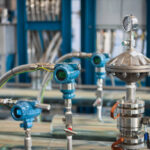Necessary Technology Skills for a Firefighter The sport of firefighting is a noble and demanding profession that has evolved significantly with technological progress. While physical fitness, courage and quick thinking are still critical, modern firefighters must also have a variety of technological skills to excel in their roles. Technology plays a key role in increasing efficiency and safety, from the use of advanced firefighting equipment to the use of digital tools for communication and analytics.
In this article, we’ll explore the basic technology skills every firefighter should acquire, broken down into key areas.
1. Knowledge of firefighting equipment
Advanced tools and equipment
Modern firefighting relies on advanced equipment such as thermal imaging cameras, drones and fire suppression systems. Firefighters must understand how to operate these tools effectively. For example:
- Thermal imaging cameras: These devices help firefighters detect heat traces through smoke, help locate victims and identify fire hotspots.
- Drones: Equipped with cameras and sensors, drones provide an aerial perspective of fire scenes, enabling strategic planning and risk assessment.
Maintenance and troubleshooting
Necessary Technology Skills for a Firefighter should also be skilled in maintaining and troubleshooting their equipment to ensure reliability during emergencies. Regular inspections and basic knowledge of mechanics and electronics are essential.
2. Digital communication skills
Radio communication
Firefighters often work in high-stress environments where clear and concise communication is important. Knowledge of the use of digital radios and communication systems ensures effective coordination between team members and other emergency services.
Mobile application
Many fire departments use mobile apps to:
- Incident Reporting: Log fires with detailed information.
- Navigation: Access real-time maps and GPS for faster response.
- Resource Allocation: Managing the distribution of personnel and equipment.
Understanding these tools improves decision-making and operational efficiency.
3. Data analysis and management
Incident data record
Firefighters are increasingly required to record and analyze fire-related data. This includes documenting:
The cause of the fire.
Materials used.
Effectiveness of suppression techniques.
Use of Analytics
Data analytics tools can help identify trends and improve firefighting strategies. For example:
Predictive analytics can highlight fire-prone areas.
Analysis of historical data can refine training programs and resource allocation.
4. Mastery of fire simulation software
Training simulations
Simulation software is a powerful tool for firefighter training. These programs create virtual fire scenarios that allow students to:
Practice making decisions under pressure.
Learn to navigate complex fire situations.
Scenario planning
In addition to training, simulation software is used for pre-incident planning. Firefighters can model potential fire scenarios in high-risk areas, enabling better preparation and response strategies.
5. Geographic Information Systems (GIS) skills.
Mapping and analysis
GIS technology is an integral part of modern firefighting. It helps in:
Mapping areas at risk of fire.
Terrain analysis for effective resource deployment.
Real-time updates
During emergency situations, GIS tools provide real-time information on weather conditions, road availability, and fire spread patterns. Firefighters must be adept at interpreting this information in order to make informed decisions.
6. Understanding Building Information Modeling (BIM)
Structural awareness
BIM provides detailed digital representations of buildings, including their layout, materials and structural vulnerabilities. Firefighters equipped with BIM skills can:
Plan entry and exit strategies more effectively.
Identify potential hazards such as weak floors or flammable materials.
Integration with other systems
BIM systems are often integrated with other technologies such as fire alarms and sprinklers. Understanding these integrations ensures that firefighters can respond quickly and accurately.
7. Command and control systems
Incident Command Software
Firefighters in leadership roles must be able to operate command and control software. These systems coordinate efforts:
- Assigning tasks to team members.
- Monitoring resource usage.
- Providing an overview of the accident scene.
Collaboration tools
Effective collaboration tools ensure seamless communication between different teams and increase overall coordination and efficiency.
8. Cyber Security Awareness
Protection of critical systems
As fire departments adopt more digital tools, they become vulnerable to cyber threats. Firefighters should have a basic understanding of cyber security to:
- Secure communication networks.
- Protect sensitive data such as incident reports and personal information.
- Responding to cyber incidents
In the event of a cyber attack, firefighters must know how to implement contingency plans to maintain operations.
9. First aid medical technique
Advanced medical equipment
Firefighters often serve as first responders to medical emergencies. Knowledge of modern medical equipment such as defibrillators and portable monitors is essential to save lives.
Telemedicine tools
In some counties, firefighters use telemedicine devices to remotely connect with doctors and provide professional care to victims on the scene. Understanding how to operate these tools enhances their medical response capabilities.
10. Social Media and Public Awareness
Community involvement
Firefighters can use social media platforms to:
- Share fire safety tips.
- Provide real-time updates during emergency situations.
- Educate the public about fire precautions.
- Crisis communication
In times of disaster, social media becomes a critical communication tool. Firefighters should know how to quickly disseminate accurate information to avoid panic and misinformation.
11. Lifelong learning and adaptability
Continuous training
Technology is evolving rapidly and firefighters must commit to lifelong learning. Regular training programs, workshops and certifications ensure they are always up to date with the latest developments.
Accepting the change
Adaptability is a key skill in a technology-based environment. Firefighters should be open to learning new tools and methods that increase their effectiveness.
Conclusion
The role of the firefighter has expanded far beyond putting out flames. Today’s firefighters must combine traditional skills with technological knowledge to effectively address modern challenges.










